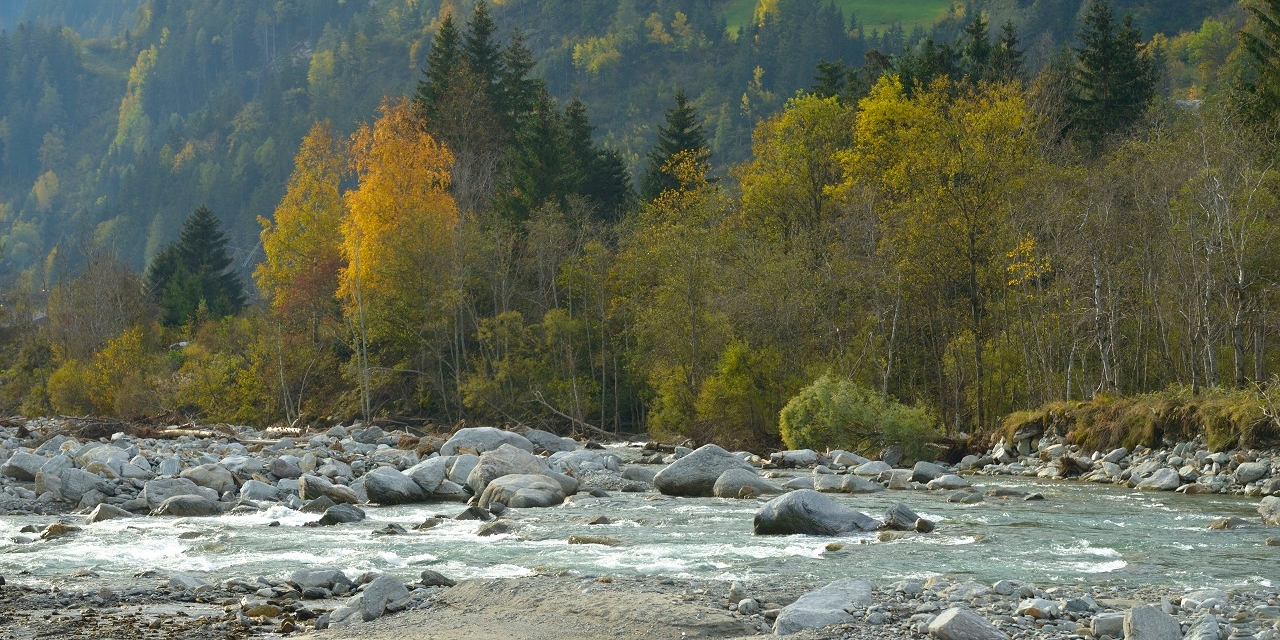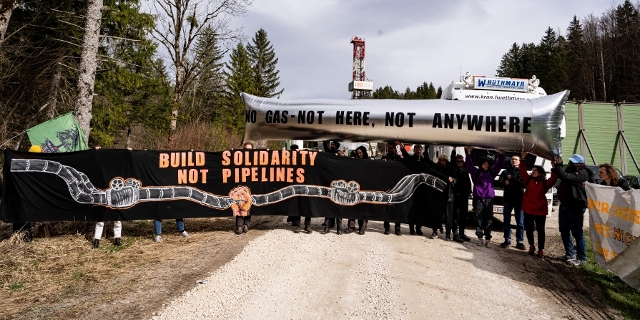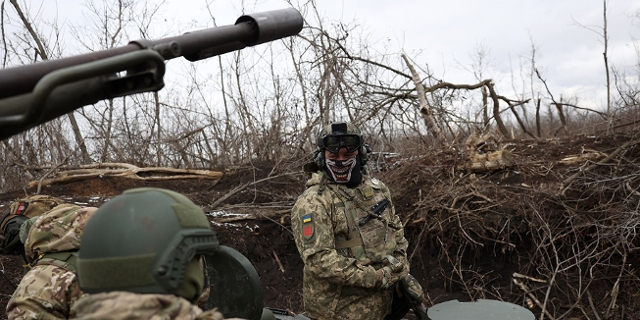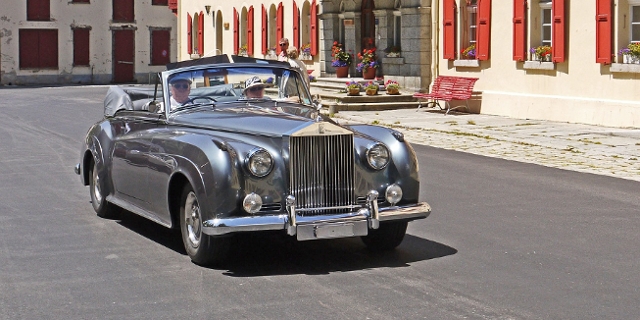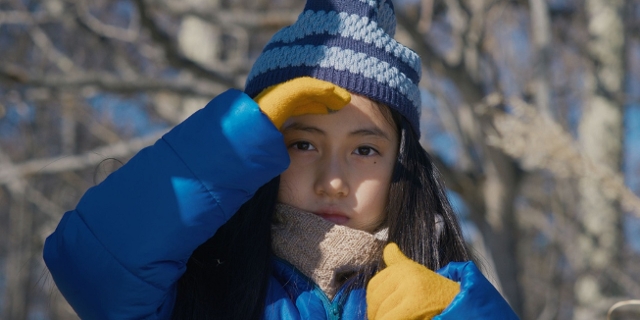Isel - The Great Survivor
Throughout this year of crisis, I’ve stayed in Austria. But I’ve travelled to all corners of my beautiful adopted homeland to highlight the last pockets of wild nature here and also the stories of the Austrians striving to protect them.
My last project of the year has been to hike up the Isel, Austria’s last glacier-fed river that runs entirely free from its source to confluence. There’s a new hiking trail, the Iseltrail, which is designed to showcase both its beauty and ecological importance; and thereby safeguard its future.
This year I’ve dedicated a lot of my journalism to the biodiversity crisis because, both despite and because of COVID-19, I think it is the most important story in the world.
As the WWF’s water protection expert Marianne Götsch told me during my Isel adventure, „Healthy ecosystems makes us more resilient to pandemics, healthy ecosystems makes us more resilient to climate change and healthy ecosystems give us the services we humans need to survive.“
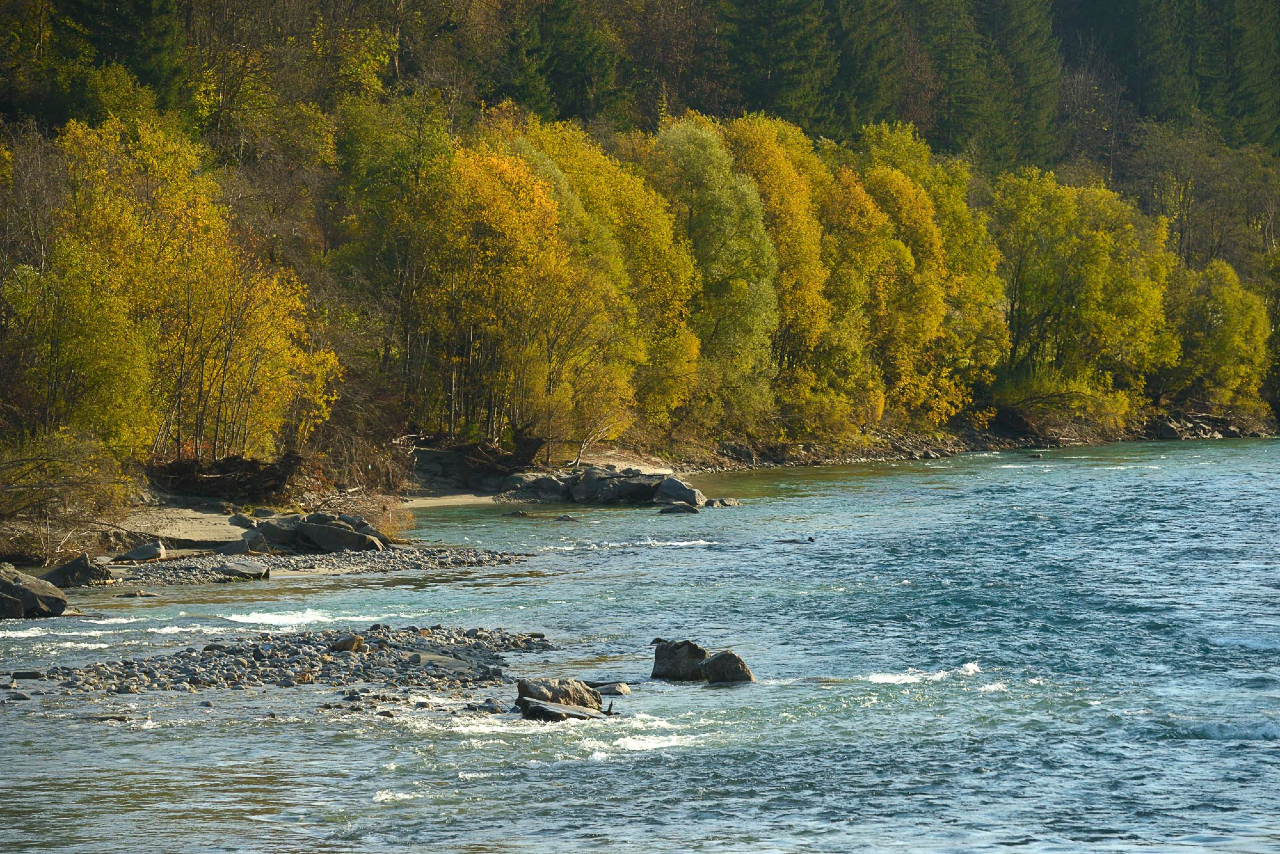
Matthias Schickhofer
Across the globe, carefully balanced ecosystems that have taken millennia to develop have been destroyed within a few decades.
30 billion trees are being removed every year globally while untold numbers of rivers and lakes are drained of water to create electricity or irrigate agricultural fields. But it is the very forests that create the rainfall we depend on. It is so short-sighted.
When I think of the barren future our wanton destruction of nature is bequeathing to our children, I feel the urge to climb on top of a roof and shout “Wake up! Think about the consequences!”.
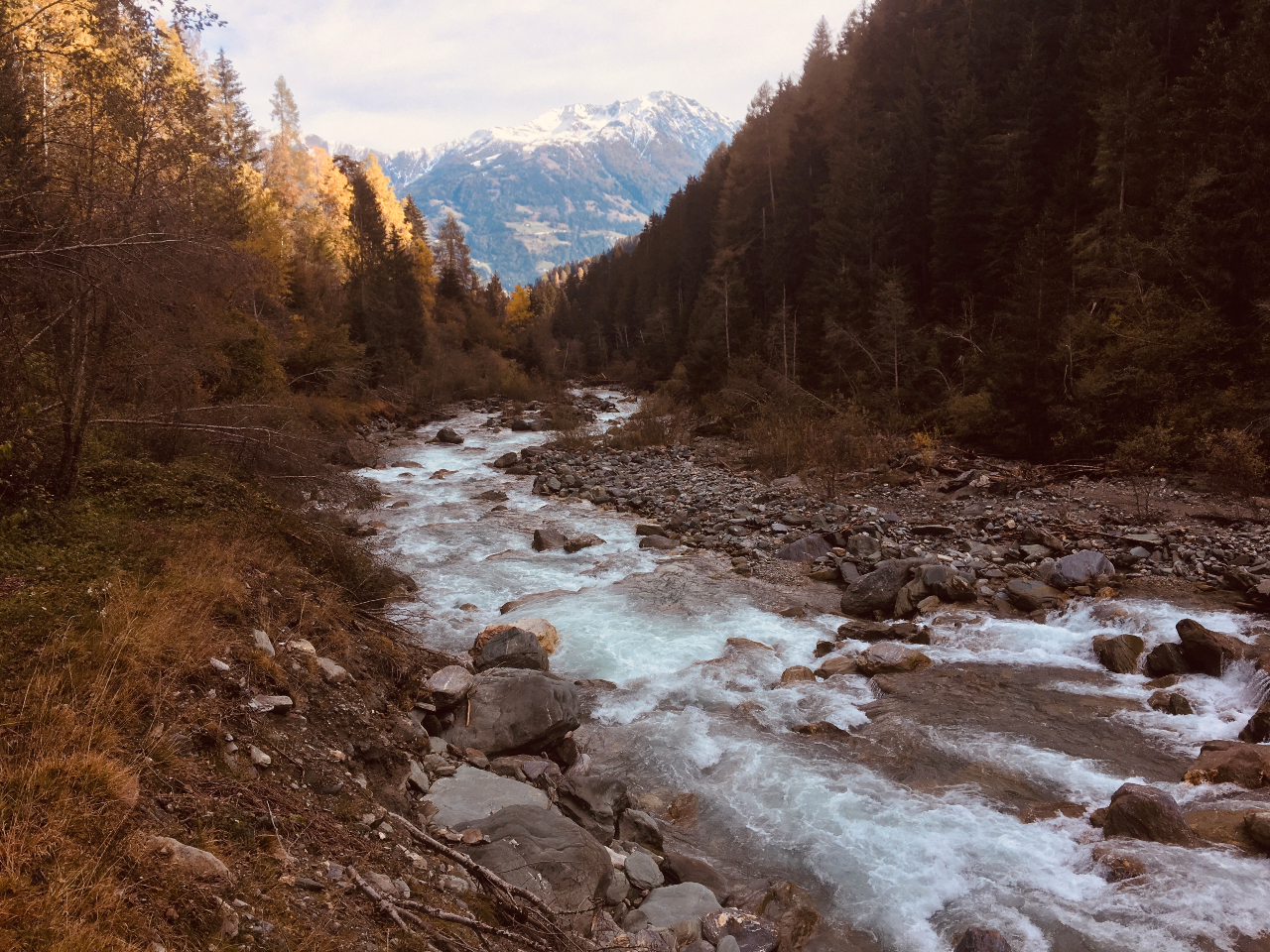
Chris Cummins
The European Biodiversity Crisis
In Europe, we self-righteously point at the habitat destruction in the global south, but, we live in the historically most over-exploited and over-developed continent on the planet. And, even so, we continue to destroy the very few last remaining pockets of natural wildernesses left.
Whether its primary forest in Romania or, this month, the green light being given to clear the Tyrolean Inn Valley’s last remaining natural forest, the Forchetwald, or the Dannenröder forest in Hessen being destroyed for the sake of a road, these stories rarely make it beyond the news-in-brief sections of the media.
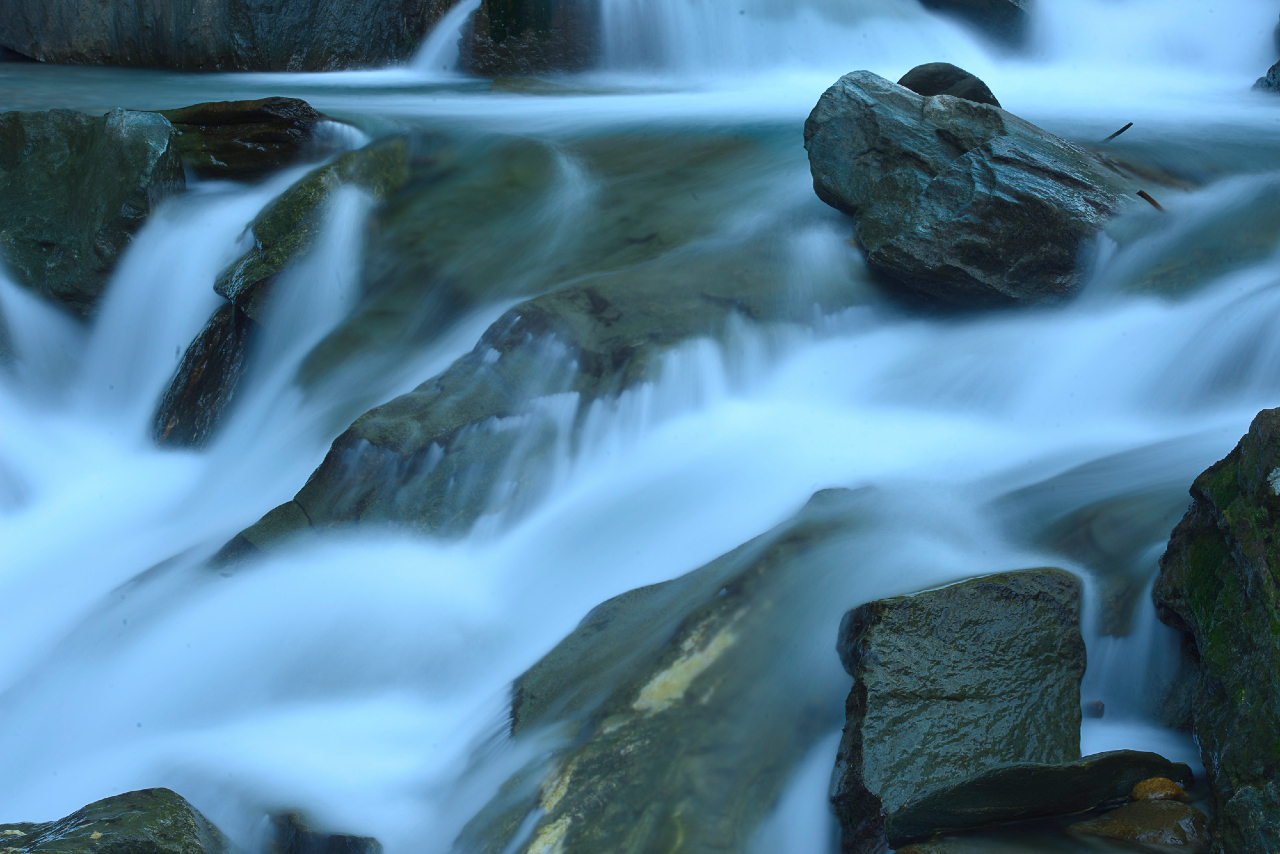
Matthias Schickhofer
Wild water, meanwhile, has been harnessed for electricity, rivers have been controlled to make space for ever more carparks and supermarkets on their former floodplains; and we take very little time to think about the habitats these developments have destroyed and the biodiversity that has been lost.
80% of fresh water life has been lost
There’s a terrifying statistic highlighted in David Attenborough’s new documentary A Life On This Planet in which the TV-veteran points out that by damming, polluting and over-extracting rivers and lakes, we’ve reduced the amount of populations of plant and animal life in freshwater by 80% over the course of his career.
In Austria only 15% of rivers are considered to be in a healthy biological state. That’s why the Isel is so precious.
The main channel of the Isel seems secure, but, as we will hear, conservationists say the tributaries that help sustain its biological health are under threat.
And if this complicated riverine ecosystem is destroyed we will have lost our reference points to how a wild river should look, what ecological services it can provide and what diverse habitats it harbours.
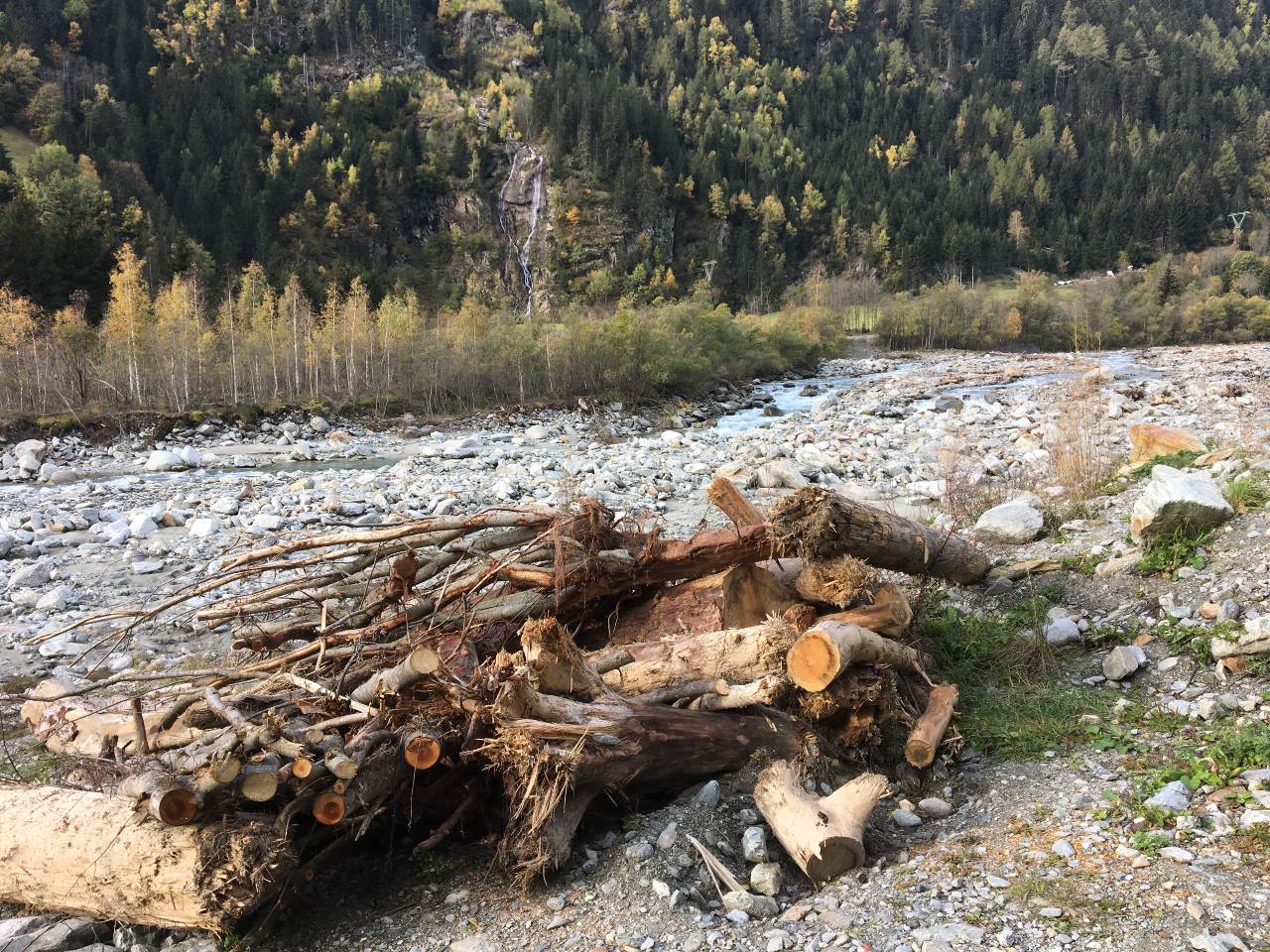
chris cummins
There is immense pressure for land-usage in Austria and the Isel, though still wild, is not an area of untouched nature.
At several points in the lower-sections, as the river approaches the town of Lienz, the left bank has been engineered to prevent the flooding of settlements and vital human infrastructure.
No Dams, Intact Floodplains
But the important factor here is that its flow is uninterrupted by the dams and hydroelectric projects that choke the power of other mountain rivers. Through most of its course the river is often allowed to spread out during the daily flood, sometimes into the forests that line its right bank. This daily process brings life and dynamism to the local ecology.
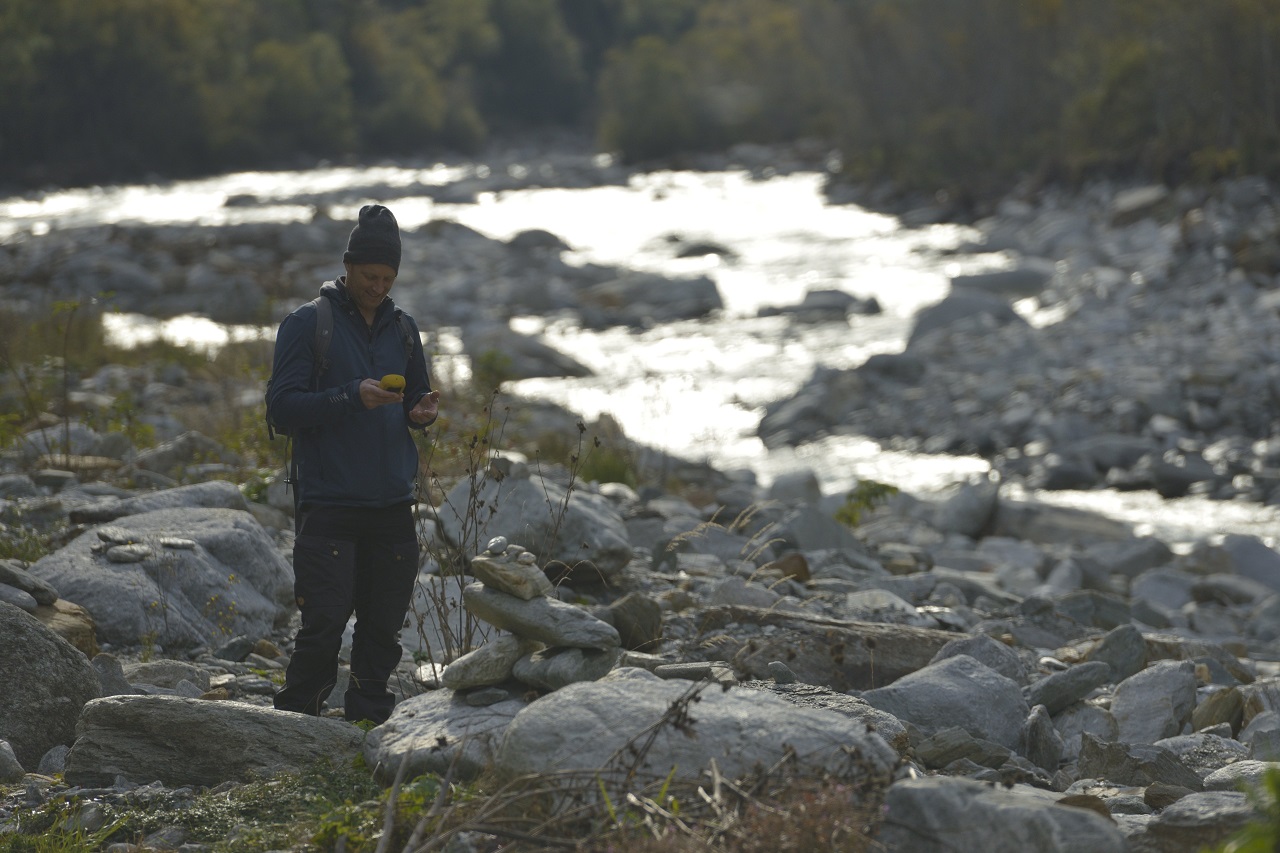
Matthias Schickhofer
Ever-changing Dynamic Nature
This is best seen around 30km upstream of the confluence with the Drava at Lienz. Here, there’s a wide stretch of gravel, pebbles and boulders that glisten in the sun. The river, which is fed by the glaciers that gleam white in the distance, has now divided into several small channels, some foaming white with purpose, others meandering leisurely through the outer gravel. Shrubs peep up through the rocks.
But there are also boulders the size of small houses lay strewn around as well as slowly rotting tree-trunks, testament to their almost unimaginable power of the river in times of flood.
„An Experience That Will Never Leave You“
That we can still enjoy the magnificence of the Isel river owes a big debt of gratitude to 82-year old Wolfgang Retter, a conservationist and former biology teacher who spent decades helping to fight off hydroelectric plans for the river. Before leaving Lienz I met him for a chat on the banks of the river.
“You can experience an entire river system in such a short amount of time,” he beamed. “Once you have done this, the experience will never leave you.”
Wolfgang, who is still spritely and buzzing with energy in his 9th decade, explained to me how the regular flooding of the river allows the water to carry and distribute gravel downstream, constantly reshaping itself like a chameleon and creating a habitat for plants and small animals that exist nowhere else.
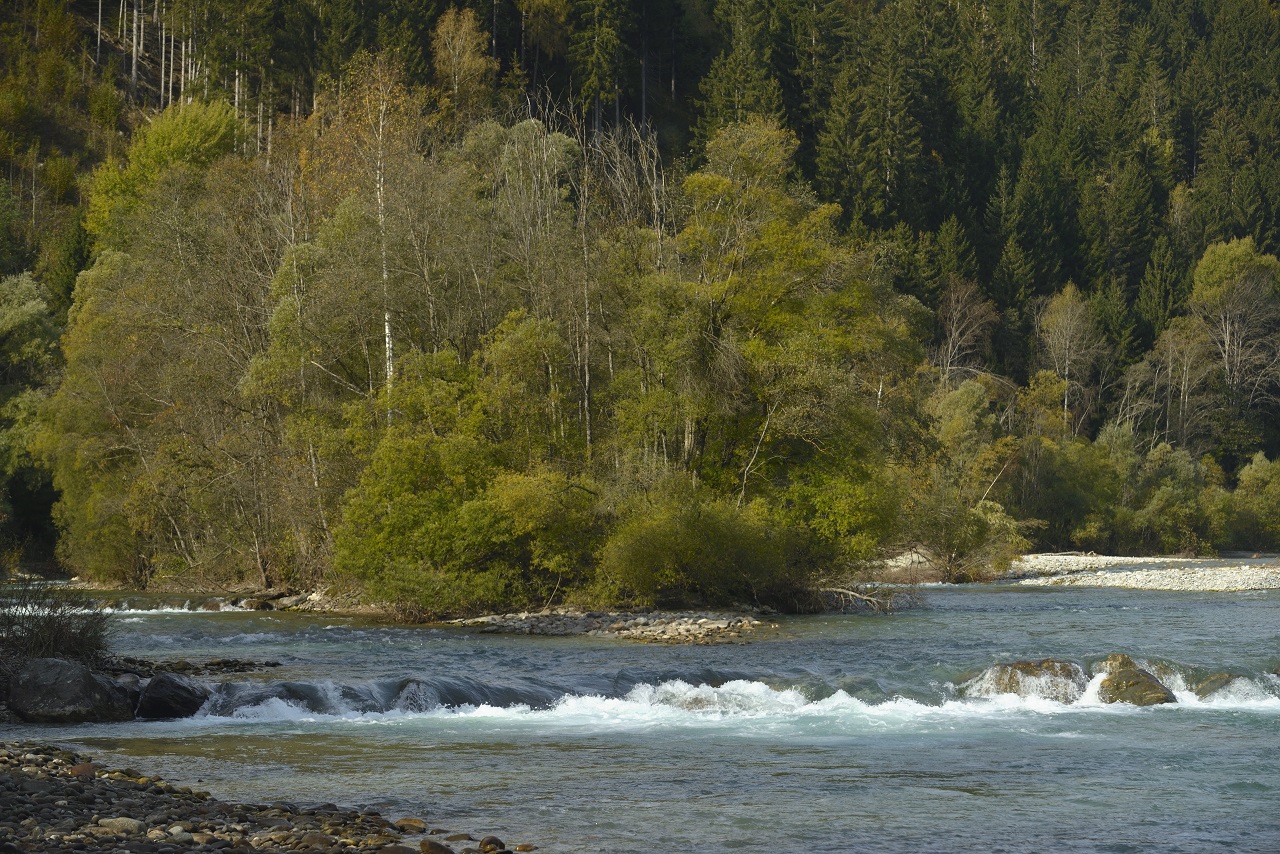
Matthias Schickhofer
It is now easier than ever to admire and begin to understand this natural theatre.
After years of planning, the Iseltrail was opened this summer. Over 5 well sign-posted stages, the trail leads up the entire 75km length of the river from its confluence with the Drava to its source below the mighty Rötspitze mountain peak, deep in the Hohe Tauern National Park.
One Final Adventure
Late this autumn, in my final biodiversity adventure before lock-down, I set off from Lienz with nature-writer Matthias Schickhofer, who has been instrumental in developing the project, to see how far up river we could get before the snow got too deep and what we might see on route.
On the first day of our hike, Matthias took me to one the flood plains. Throughout the day he was a hive of activity, constantly unpacking his camera to capture images of the celebrated biodiversity.
As a non-scientist, I was initially fairly baffled by some of his enthusiasm, particularly by his passion for a scruffy looking scrub called the German Tamarisk. This clung to the gravel banks and between the rocks on the river’s main shifting islands.
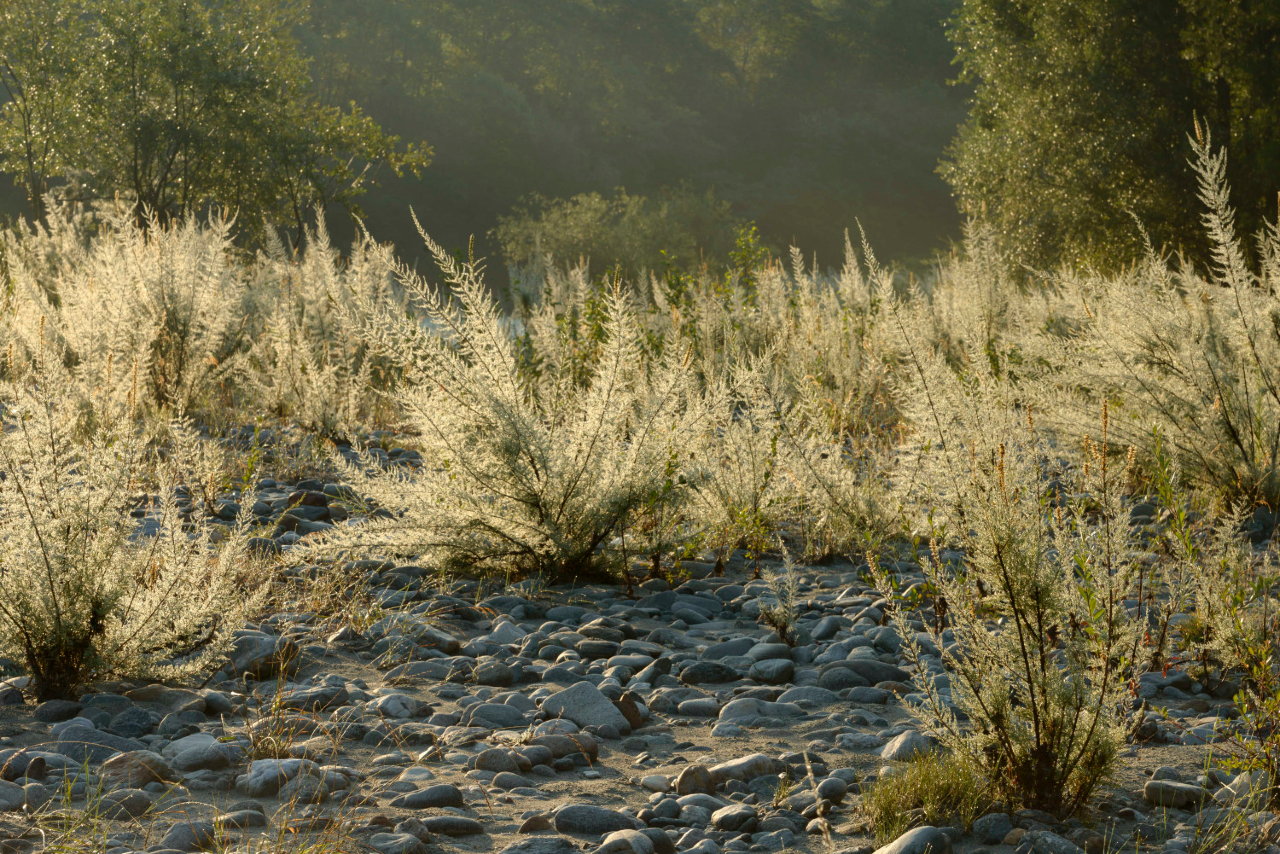
Matthias Schickhofer
German Tamarisk
“The German Tamarisk used to be a quite ordinary plant when the rivers were still wild,” he told me. “But as they all became dammed and there are no more floods, the Tamarisk seemed extinct on most rivers. It needs flooding to survive. This plant is a sign that this is an intact wild river.”
Matthias hopes that the Iseltrail will help protect the river’s long-term future.
Information boards have been set up along the banks explaining, at important sections, the biological importance of the river’s free state. But money talks more loudly so it’s a strong argument for conservation that tourists have started coming to the region because of the river.
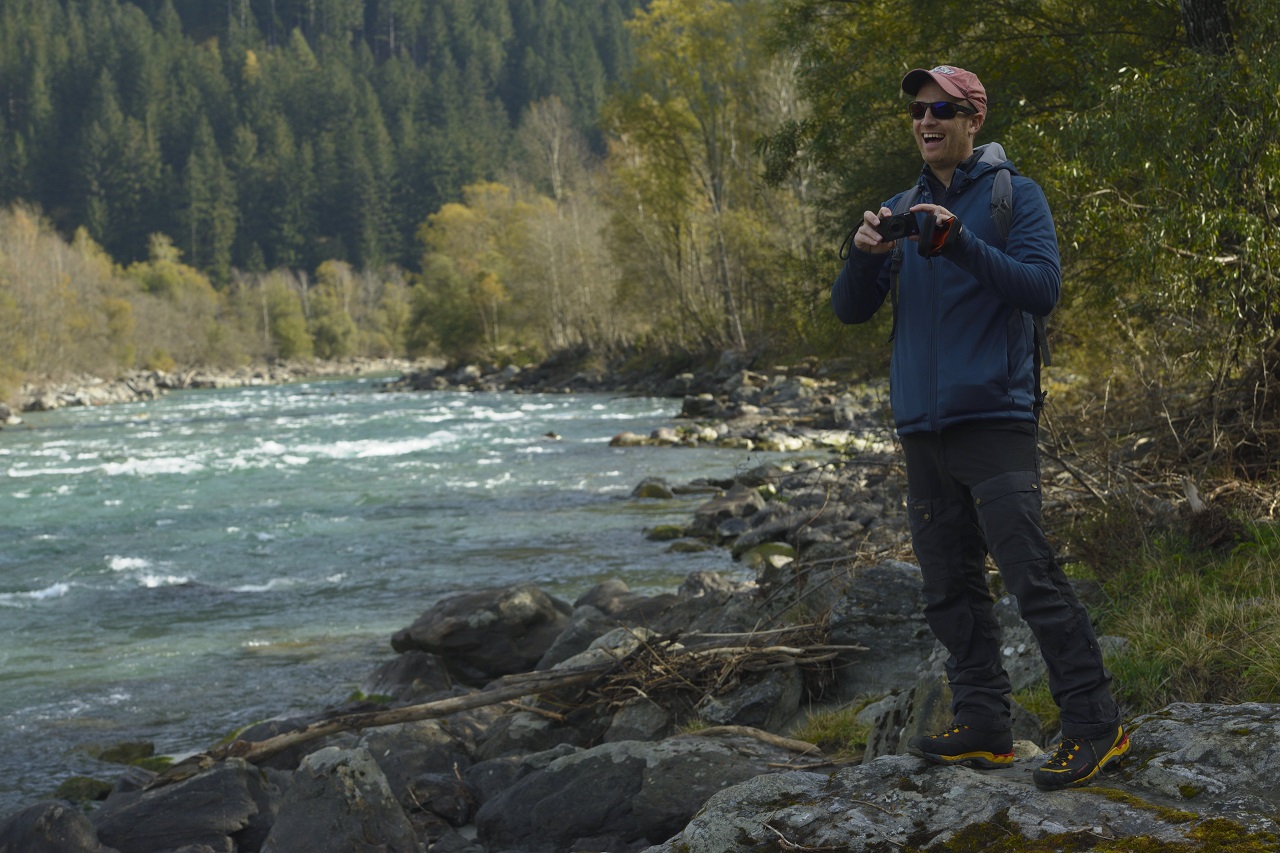
Matthias Schickhofer
A Win-Win Situation?
Franz Theurl of the Lienz tourism board has a banking background but he says his heart „beats green.“ He thinks that by drawing tourists to the quieter and wilder spots of East Tyrol, the Iseltrail has created a win-win situation.
On the one hand, in our hectic world, there is an increasing appetite for the slower more meditative tourism that a hike along a river offers.
On the other hand it might help protect the livelihoods of the farmers who protect the much admired cultural landscape that have been created over centuries by a combination of wild nature and the nurture of traditional Alm mountain farming.
These days, many farmers can’t survive through agriculture alone. They need to supplement their income by renting out rooms or apartments to tourists. In its first year the Iseltrail hiking path, which meanders close to many small communities, already brought revenue to families who live outside the central tourism centers and is proving popular in villages such as Prägarten.
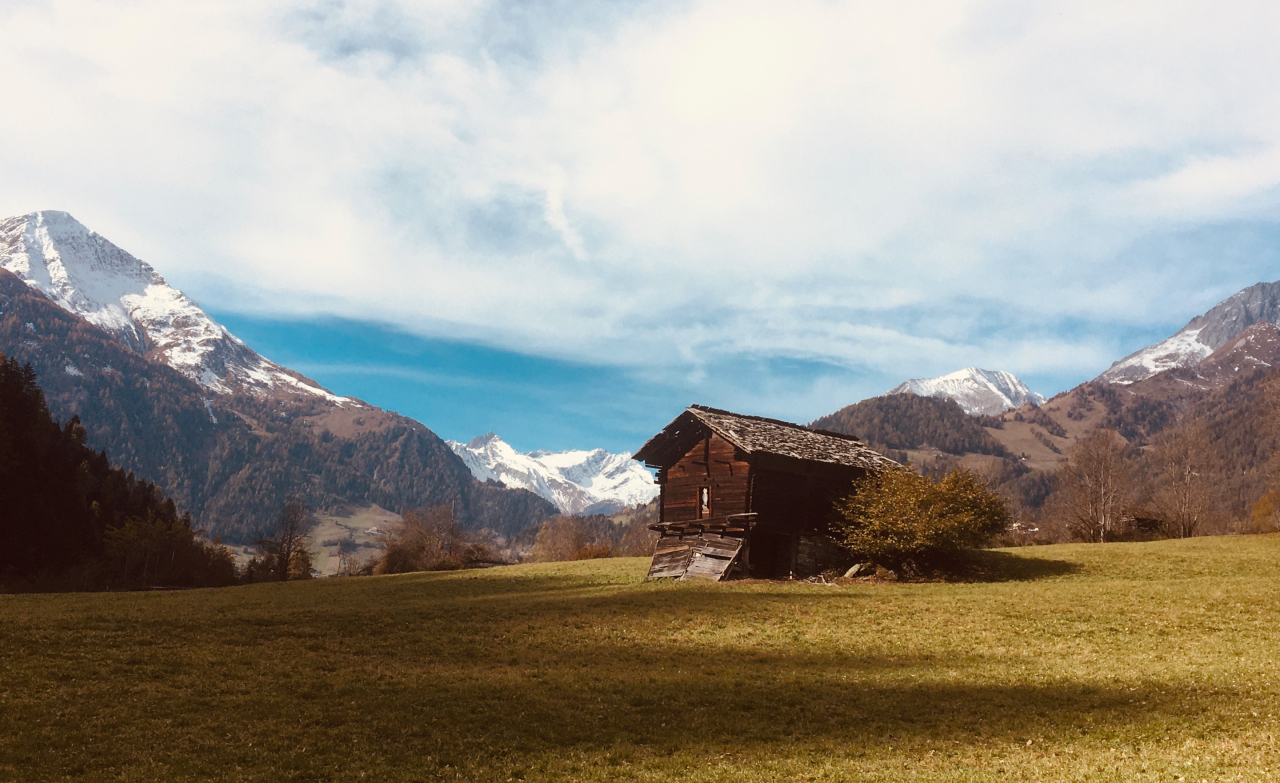
Chris Cummins
But Is The Future Of The Isel Secure?
In 2015 the Isel river became a Natura 2000 protection zone, part of a network of protected areas covering Europe’s most valuable and threatened species and habitats.
But Marianne Götsch of the WWF says the survival of the river in its healthy biological state won’t be guaranteed until the mountain streams that feed it are also protected.
“I wouldn’t agree that the Isel itself is safe,” she told me. “Nothing is safe as long as the whole system is not protected because a river is more than just a line on a map. This natural riverine ecosystem depends on the interconnection with its tributaries and alone it is not capable of survival in its natural constitution. What we need is a protected area that also protects the tributaries: the Kalserbach, the Tauernbach and Schwarzach.”
These tributaries, says Marianne, are in acute danger. A hydroelectric power plant is planned on the Tauernbach, there already is a power plant on the Schwarzach and there is a power plant planned on the Kalserbach. “This one would be especially terrible,” she says, “because it directly touches the Natura 2000 protected area. If you block the tributaries you hurt and damage the whole system.”
The Shrinking Glaciers
By day four of our hike, Matthias and I had already reached the Hohe Tauern national park and were walking through snow. By now the river was a narrow torrent at the bottom of a low valley. Ahead, glistening in the sun was the mighty Rötspitze, three and a half thousand metres tall. It is encircled by the glaciers that feed the Isel.
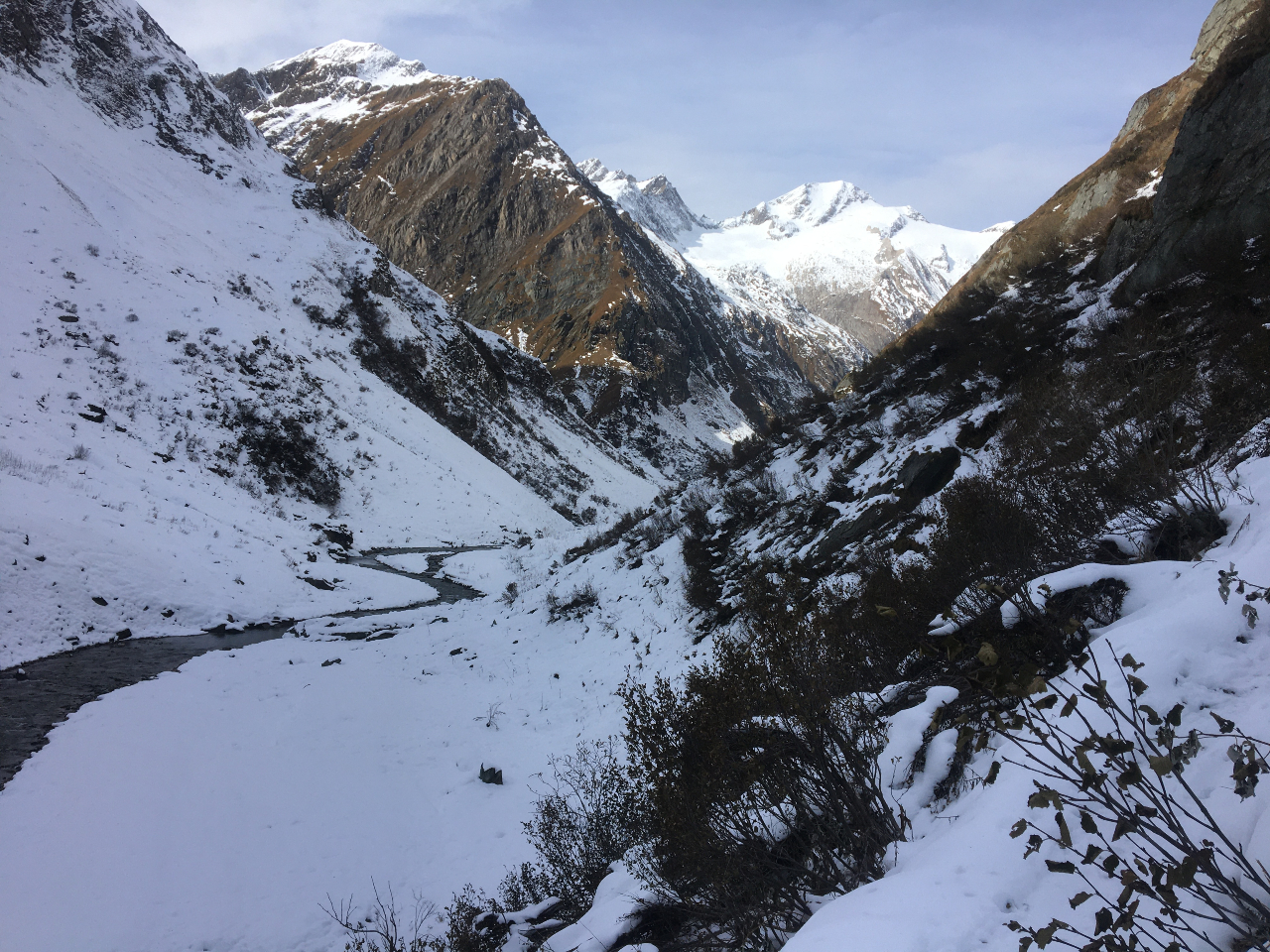
Chris Cummins
This all felt like an almost Arctic wilderness, but, tragically, the human hand is also felt here acutely. Matthias Schickhofer has come here regularly over many years and seen with his own eyes how climate change is bringing alarming changes in the high Alpine environment:
“The most visible thing is that the glaciers are retreating, and this is happening quite rapidly. You can see it from year to year that they are shrinking,” Matthias told me. “And the second thing is that the permafrost is melting. This is ice in the core of the rock walls of the northern faces of the mountains. When the permafrost melts, the rock gets loose and starts to slide down. All along our route, the scars of recent rockfalls give an ominous warning of what is to come."
A Whole Water System At Threat
The glaciers were sparkling in the sun on this late autumn day. They an iconic part of the Alpine scenery, but their demise will have consequences far beyond these mountain communities:
The glaciers are very important storages of water, which they release only gradually over the summer months. “If this water donation would disappear, there will be severe problems for the big rivers such as the Rhine or the Danube because they will have much less water than they have today,” warns Matthias. “This will have severe consequences for industry and agriculture because all depend on that water. There’ll be more competition for the water and more conflict over the water.”
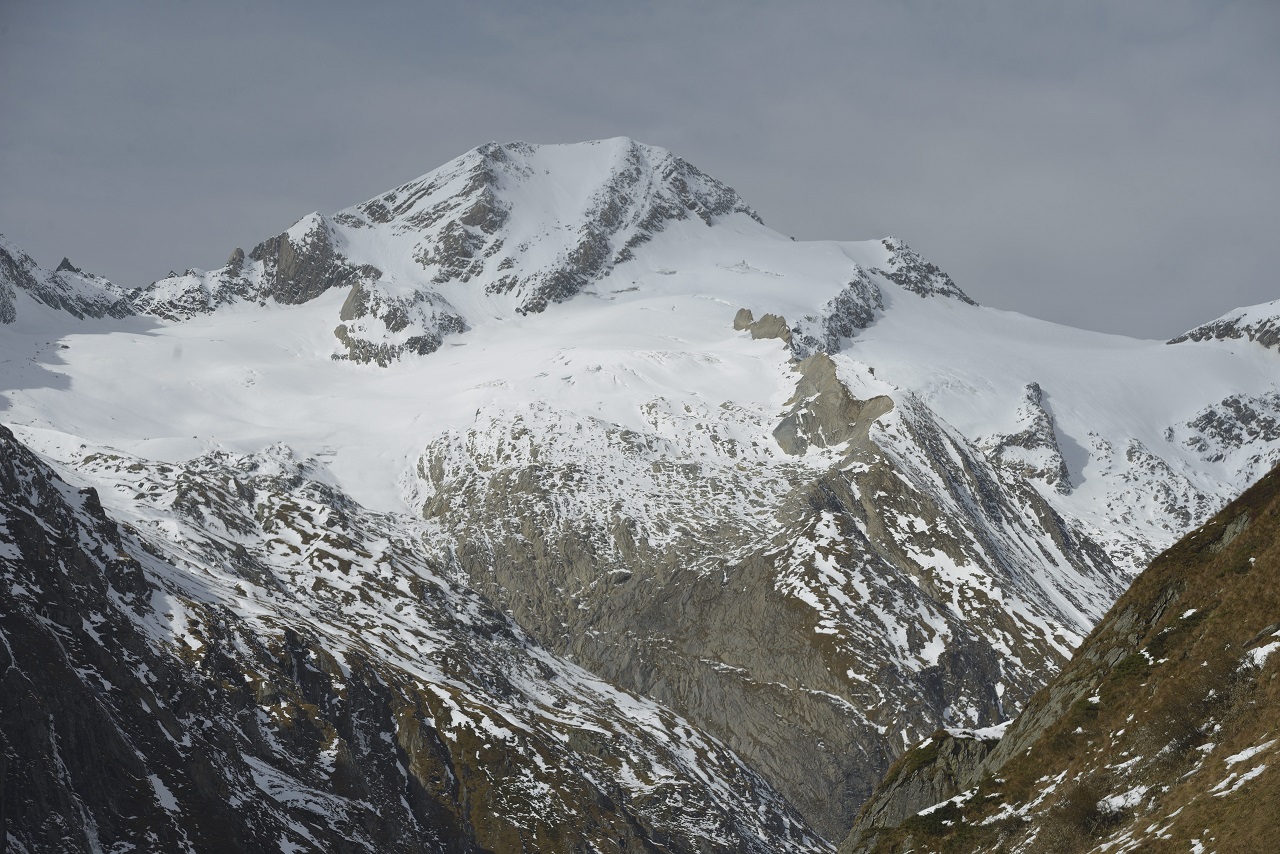
Matthias Schickhofer
Scientists say it is too late to save many Alpine glaciers, but we can still save the ones at higher elevations. Those in steep-side valleys that provide the ice-sheets with enough shade might survive if we cut emissions fast.
”We have to stop emitting so much carbon from cars and from industry, we have to become more efficient, we have to save more energy,” says Matthias.
This isn’t about making sacrifices, it is about sensible forward planning.
If you are looking for some New Year’s Resolutions for 2021, those are some good suggestions.
Publiziert am 31.12.2020







